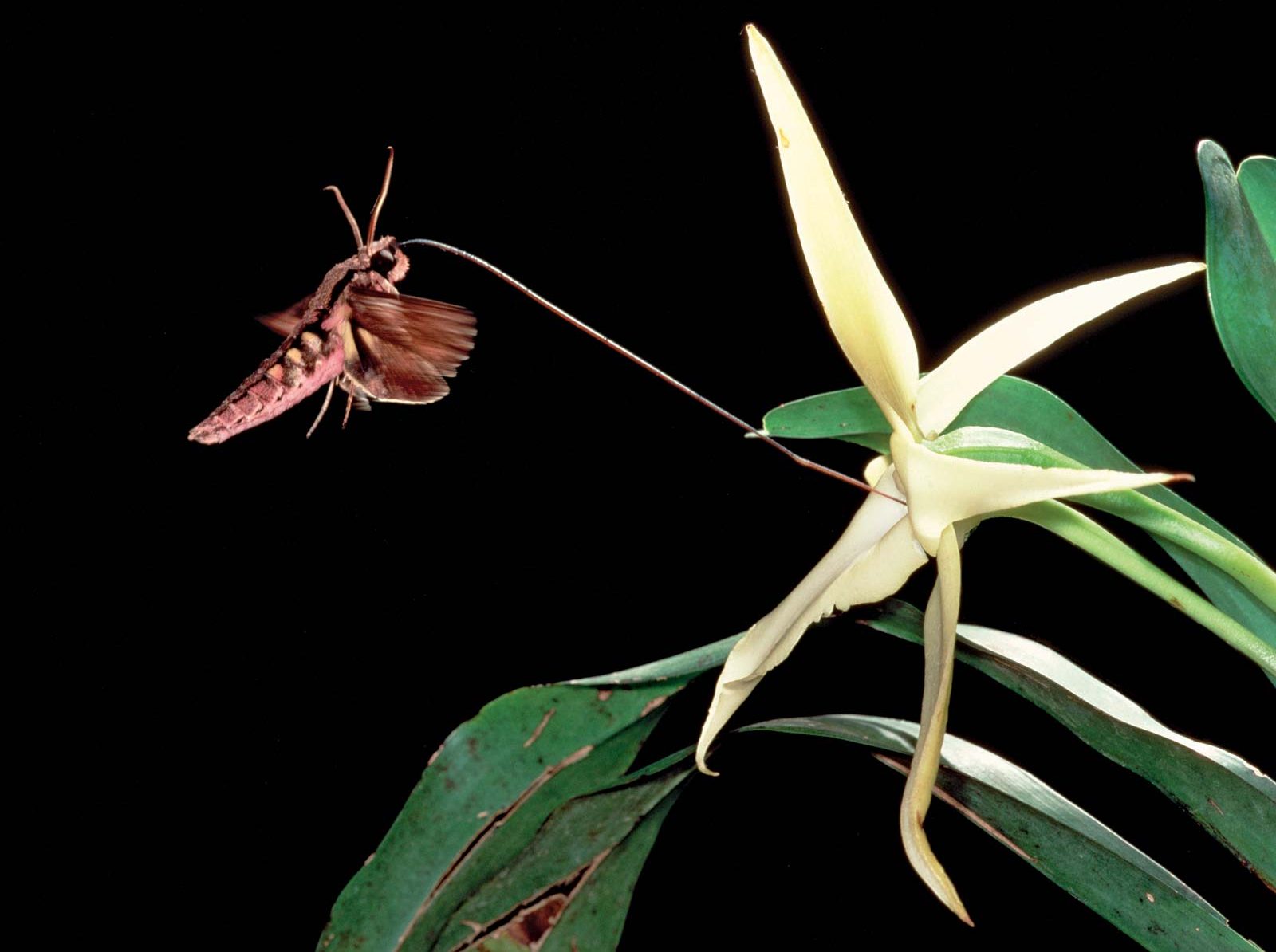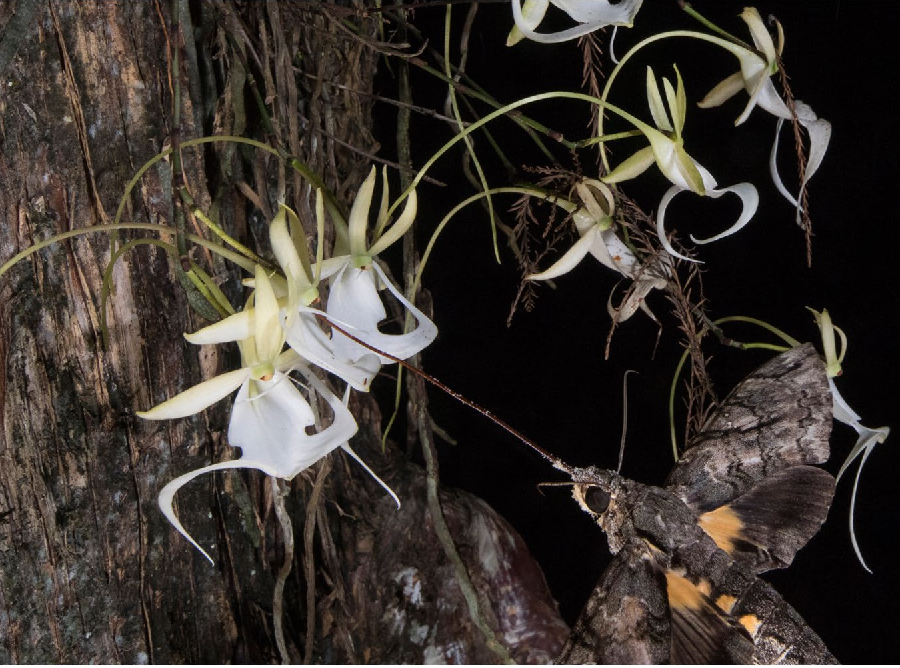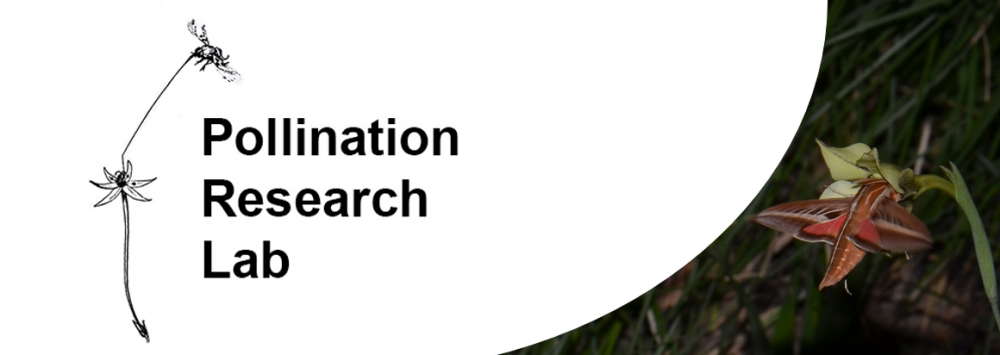Even with centuries of knowledge and research, pollinators can still remain elusive to scientists. Just consider Darwin’s prediction that the orchid Angraecum sesquipedale must be pollinated by a very long-tongued moth; a prediction only proved 41 years later, years after his death, when Xanthopan morganii ssp. predicate was finally discovered.

Angraecum sesquipedale being pollinated by the predicted by Xanthopan morganii ssp. predicate, aka Darwin’s moth. Photo: Minden Pictures / SuperStock.
The invention of equipment such as camera traps has helped immensely with pollinator discovery (for a rather nicely written appreciation of camera trapping, see a previous article on this blog). Even with help, pollination biology is not always for the faint hearted! Finding an appropriate site, then the plants and then the plants in flower is a whole journey in and of itself but that is before the journey of finding the pollinator. With dedication and determination however, any pollinator discovery can be filled with joy and relief or occasional confusion (all accompanied by bursts of laughter or tears). Consider the recent research on the pollination of the ghost orchid, Dendrophylax lindenii. After a frustrating five year search, scientists climbed over 50 feet tall trees in a swamp in the everglades to set up specialized camera traps for months, eventually revealing the suspected moth species (pictured below) and others pollinating the orchid, raising questions about Darwin’s predictions all over again.

Dendrophylax lindenii being pollinated by Cocytius antaeus. Photo: Mac Stone.
Prof Steve Johnson is one such dedicated and determined pollination biologist and I’m sure that most people who come across this blog do so out of sheer admiration for him and his work. His latest discovery is the hawkmoth pollinator of Bonatea pulchella. Yes! Another orchid and its long-tongued moth pollinator. The story of finding nothing was reported here: https://www.mountainlands.co.za/elusive-pollinator/; and the story of success is reported here: https://www.mountainlands.co.za/mission-accomplished/. Congratulations Steve!
One of Steve’s camera traps captures the so far elusive moth pollinator of Bonatea pulchella for the first time. Stay tuned for more information and the publication of the discovery! Video: Steve Johnson.
